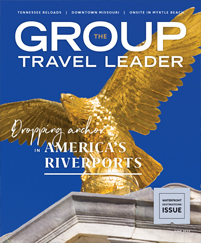 Photo Courtesy National Mustard Museum
Photo Courtesy National Mustard Museum
When Barry Levenson’s beloved Boston Red Sox lost the seventh and deciding game of the 1986 World Series, he went to an all-night grocery and aimlessly wandered the aisles in his disappointment. In the mustard section, Levenson had a revelation to begin collecting all things related to mustard.
In 1967, Ed Gotwalt received an elephant statue as a wedding present. “On my honeymoon, I bought four more and decided to start collecting,” said Gotwalt. “It got out of hand.”
Leila Cohoon began collecting hair as a hobby when she started the Independence College of Cosmetology 37 years ago in Independence, Mo., and now has more than 150 wreaths and more than 2,000 pieces of jewelry made from human hair.
The determined collecting efforts of Levenson, Gotwalt and Cohoon are now preserved in museums. These and many other niche museums that focus intently on one subject, from country doctors to the history of plumbing, can add interesting and fascinating one-of-a-kind steps to a group itinerary.
I’ll take a little mustard
As Levenson’s mustard collection grew, he stored it in a small former pump house in his back yard and then opened a museum in Mount Horeb, Wis., in 1992 that became a hit with group travelers.
The National Mustard Museum has more than 5,200 types of mustard from around the world, along with thousands of antique mustard pots and hundreds of tins on display. There also are mustard posters, advertising paraphernalia and assorted memorabilia.
Last November, Levenson and his wife, Patti, known as “Mrs. Mustard,” moved the museum about 20 miles away to a larger facility on the site of a former antiques mall in Middleton, Wis., on the outskirts of Madison.
“We have added 3,000 square feet,” said Patti, the museum’s marketing director. “The museum is similar but with more exhibit space. We added a snack bar to our tasting bar and now sell hot pretzels and mini hot dogs and brats. You can taste all kinds of mustard and then buy something to put it on.”
The Levensons also added a new interactive touch-screen computer with a mustard-and-food quiz, additional restrooms and a demonstration kitchen.
Groups can buy more than 500 types of mustard in the gift shop, along with hot sauces, barbecue sauces, horseradish and other condiments.
“We have group tour packages,” said Patti.
Groups get 10 percent off in the museum shop, where they have their own checkout line and see an introductory video. A staff person assigned to the group does a welcome and gives a guided tour of the museum.
“We are in an old, quaint area of downtown with lots of little cafes and restaurants and gift shops groups can walk to,” said Patti.
www.mustardmuseum.com
(800) 538-6878
Elephant Man
From that single good-luck wedding gift, Gotwalt has amassed a collection of more than 10,000 elephants.
“They are in all shapes and sizes, from teeny tiny to two life-size ones outside,” he said. “And they are from all over the world.”
 |
| Courtesy Mister Ed’s Elephant Museum |
The elephants range from one pulling a 24-karat gold circus wagon to an elephant hair dryer and an elephant potty chair.
By 1975, Gotwalt’s collection had grown to such an extent that his wife made him get it out of the house. So he opened a museum, and today, Mister Ed’s Elephant Museum in Orrtanna, Pa., has become a roadside icon for travelers on the way to Gettysburg.
One of the large outside elephants has moving eyes and ears, and another pumps water from its trunk into a fishpond, which is part of a garden.
“If I am here, I try to greet groups,” said Gotwalt. “I can point out pieces and talk to them about the collection. I have some really unique things in there. People love to have the owner stop and talk to them.”
But Mister Ed’s Elephant Museum is more than just elephants, which fill only two of the building’s seven rooms. “We also make homemade fudge, slow roast peanuts in an antique roaster and have a large candy display of all the old-time candy [from] back when you were a kid,” said Gotwalt. “An old truck is filled with Pez dispensers.”
The gift shop, naturally, is filled with a wide array of elephant gifts.
Hairy exhibits
“We still have the habit today of saving hair; when baby gets that first haircut, mothers save the hair. We don’t know why; we just put it in a book, and that’s the end of it,” Cohoon comments on her Web site.
However, it is the more elaborate Victorian-era practice of taking that hair and doing more with it than putting it into a book that fascinates Cohoon.
“They would take different kinds and colors of hair, and weave and wrap them together in flowers and petals and horseshoe wreaths,” said Janeen Aggen, spokeswoman for the City of Independence Tourism Department. “They were family histories.”
One of the wreaths has hair from everyone at a wedding reception. Another is the hair of sisters whose heads were shaved when they entered a convent. One homemade history book has samples of family members’ hair, complete with calling cards, from 1725 to 1900.
“She has another 2,500-plus pieces of artwork or jewelry made totally or partially out of hair: earrings, necklaces, watch chains,” said Aggen. “They are so intricate it’s hard to believe they are made of hair.”
The museum is also the national headquarters for the Victorian Hairwork Society.
“She once had a busload of people from New York state who came just to see her place,” said Aggen. “If was the only place they stopped. It’s definitely a niche.”
Flushed with success
If you take it for granted when you flush your toilet or turn on the water in the bathroom sink, the American Sanitary and Plumbing Museum in Watertown, Mass., will give you a greater appreciation for the plumbing industry.
 |
| Courtesy The Plumbing Museum |
“We are trade specific,” said Tom Palange, director of marketing for the museum. “And as far as we know, we are the only one of its kind in the country.”
The museum takes the mystery out of how plumbing works and how it has evolved over the years. “We separate it into different genres,” said Palange. “One area, for example, is the history of toilets.
“The first piece you see is an indoor outhouse, called an earth closet, from the early 1800s. It had a mechanism that released dirt to cover the excrement.”
The display shows example of toilets as they developed over the years, up to a modern $4,000 Japanese-made toilet. “It has all the bells and whistles,” said Palange. “It has a heated seat and is self-cleaning and self-deodorizing.”
There also are sections on water heaters, sinks and water delivery, including a section of Revolutionary War-era water pipes from Boston. There are antique bathtubs and sink fixtures, trade journals and how-to magazines. A replica of a 1910 plumber’s workshop includes tools from that time.
Groups can arrange for guided tours, and volunteers demonstrate various aspects of the plumbing trade.
The museum was begun in 1979 in Worcester, Mass., by Russell Manoog, whose father had collected antique fixtures and plumbing items for years.
J.C. Cannistraro, a plumbing and mechanical contracting company, purchased the museum when Manoog retired and reopened it in January 2009 in a 150-year-old former icehouse adjacent to the company headquarters in Watertown.
Eye-opener
“What is really nice about personalized tours is that people who come can share their stories,” said Jennie Schindler Graham, site manager for the Country Doctor Museum in Bailey, N.C.
Groups get a guided tour of the museum’s three buildings, which include a carriage house with a horse-drawn buggy and two early-20th-century Model T Fords that were used by North Carolina doctors to make their rounds.
“The buggy belonged to Dr. Henderson Erwin,” said Graham. “Once we had a gentleman in his 80s whose niece brought him as an outing. As soon as he went into the carriage house, his eyes kind of lit up, and he went directly to the buggy. He remembered that buggy. His first name was Erwin, and he was named after the doctor who had delivered him.”
The museum has many artifacts about rural medicine in the 19th and early 20th centuries that can generate such nostalgia.
“It was opened in 1967 by a physician here in Bailey as a tribute to country doctors,” said Graham. “We have branched out over the years to cover rural health care. We touch on all aspects of rural health care.
“We have an apothecary, a nursing exhibit, and we are just getting some artifacts about midwifery.”
Now operated by East Carolina University, the museum has more than 5,000 artifacts and historic documents. In addition to the carriage house, the buildings include the 19th-century apothecary with the original cabinets from Bailey’s first drugstore and a replica doctor’s office with furniture and instruments commonly used by doctors in the late 1800s, including exam tables, surgical sets, dental instruments and microscopes.
Graham said one of the most fascinating exhibits for visitors is about bloodletting, which features live leeches.
“People may have heard about it in passing, but we go into a lot of details about how and why,” said Graham. “We tell about the different methods. Leeching was just one.”
www.countrydoctormuseum.org
(252) 235-4165
Outdoor art
The Goldwell Open Air Museum, which covers nearly 8 acres, was created by a group of Belgian artists led by the late Albert Szukalski, with each piece designed within the context of the landscape.
The seven large sculptures rising from the Mojave Desert have a ghostly quality to them, which is appropriate, since they are located in Rhyolite, Nev., a ghost town on the road leading to Death Valley.
There is a life-size version of Leonardo da Vinci’s painting of the Last Supper, a 25-foot-tall pink woman made from cinder blocks, a 24-foot steel prospector and penguin, a tangle of chrome car accessories and a winged woman who reaches for the sun from atop a wooden pillar.
The free park is open year round.
www.travelnevada.com
Psychiatric insight
In 1968, George Glore, who worked in community relations for the Missouri Department of Mental Health at its St. Joseph State Hospital, worked with hospital carpenters and patients to construct a series of dioramas representing early treatment devises for a Mental Health Awareness Week open house.
The replica devices were so well received hospital officials asked him to expand the exhibit and the forerunner of the Glore Psychiatric Museum was born.
Today, the museum traces the 130-year history of the hospital, once known as the State Lunatic Asylum No. 2, and the history of the treatment of mental illness.
Now part of the St. Joseph Museum system, the Glore Museum uses full-size replicas, interactive displays, audio-visuals, documents and artifacts to tell both a shocking and informative story, from witch burnings to a large patient treadmill where residents would walk off excess energy.
There is a replica of a “tranquilizer chair,” invented by Benjamin Rush, the “father of American psychiatry” and a signer of the Declaration of Independence, in which patients would be strapped for up to six months.
There is a collection, arranged in an artistic wheel-shaped display of more than 1,400 metal items swallowed by one patient, from nails and screws to safety pins and bottle caps.
Other displays show a television set into which a patient stuffed 525 disjoined notes and wrappers from the 100,000 cigarette packs one patient collection under the delusion they could be redeemed for a new wheelchair for his ward. When officials discovered what he was doing, they purchased the wheelchair.
In the late 1990s, the mental hospital moved to a new facility across the street, and the old facility converted to a prison. The museum is now located outside the prison fence in a four-story brick building that once served as a clinic for patients at the mental hospital.











